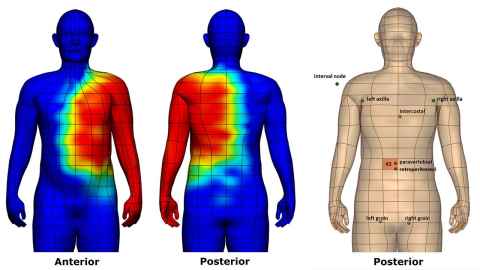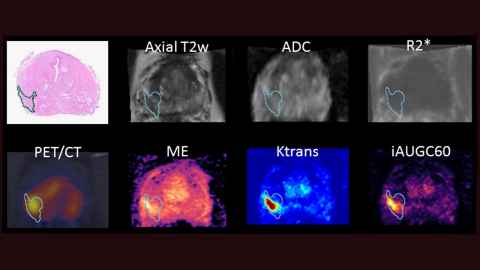Our research
Predictive software for melanoma and breast cancer
The most important prognostic factor for patients with melanoma and breast cancer is the metastatic status of lymph nodes which directly drain the primary tumour site. In this research, large imaging databases (including lymphoscintigraphy and SPECT/CT) are being analysed and used to create powerful predictive and prognostic software tools, to provide decision support systems for both medical practitioners and patients.

Imaging biomarkers for prostate cancer
The current standard of care for prostate cancer radiotherapy is to deliver a uniform dose of radiation to the prostate gland, however this can result in treatment side effects such as impotence and incontinence. We are working towards a paradigm shift in prostate radiotherapy termed Biologically Targeted RadioTherapy (BiRT), where a personalised non-uniform dose of radiation is given to each patient using information obtained from quantitative imaging (mpMRI and PET). This includes developing and testing mpMRI biomarkers via clinical trials to assess radiotherapy treatment response earlier than current PSA-based measures allow.

Understanding lymphoedema using digital twins
Lymphoedema is an incurable condition, characterised by chronic swelling in a region of the body which develops when fluid is unable to drain through the lymphatic system. It is often a side effect of cancer treatment, especially surgery and radiation therapy. Our team is developing novel imaging devices and digital twins using computational fluid dynamic models to understand how and why lymphoedema develops after cancer treatment. Our goal is to use these tools to enhance clinical assessment, guide personalised care, and ultimately prevent lymphoedema from developing in the first place.
